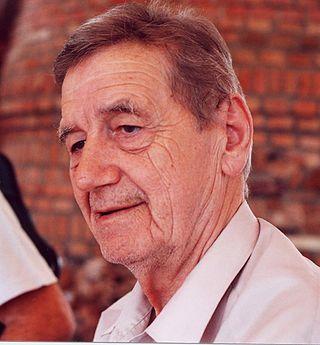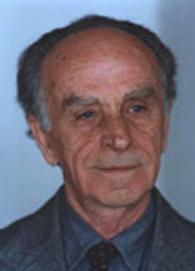
Gjakova is the seventh largest city of Kosovo and seat of Gjakova Municipality and Gjakova District. The city has 40,827 inhabitants, while the municipality has 94,556 inhabitants.

Has District was one of the 36 districts of Albania, which were dissolved in July 2000 and replaced by 12 counties. It had a population of 19,842 in 2001, and an area of 374 km2 (144 sq mi). It is in the north-east of the country, and its capital was Krumë. The area of the former district is coextensive with the present municipality of Has, which is part of Kukës County.

Junik is a town and municipality in the Gjakova District in western Kosovo.

Din Mehmeti was an Albanian poet from Kosovo. He was among the best-known classical representatives of contemporary verse in Kosovo.

Klubi i Futbollit Vëllaznimi Gjakovë, commonly known as KF Vëllaznimi, or simply as Vëllaznimi is a football club based in Gjakova, Kosovo. They currently play in the second division of football in Kosovo, First Football League of Kosovo.
Prilep, or Prejlep or Arrnjet, is a village situated in western Kosovo, close to Gjakova.

A District is the highest level of administrative divisions of Kosovo. The districts of Kosovo are based on the 2000 Reform of the UNMIK-Administration.

Besim Bokshi was an Albanian poet, linguist and philologist. He served as the president of the Academy of Sciences and Arts of Kosovo during 2008-2011.

Has is a region in north eastern Albania and south western Kosovo.

Junik is a municipality located in the District of Gjakova in western Kosovo. According to the 2011 census, the town of Junik had 6,053 inhabitants, while the municipality had 6,084 inhabitants.

Gashi is an Albanian surname and the name of one of the major historical tribes of northern Albania. It is a historical tribal region situated in the Highlands of Gjakova. The Gashi tribe is known to follow the Kanuni i Malësisë së Madhe, a variant of the Kanun. They were known among the mountain tribes for their wisdom.

Bytyçi or Bytyqi, Bityçi and Bitiçi refers to an Albanian tribe or fis centred in the southeastern Highlands of Gjakova. The surname derived from the tribe is found throughout Albania and Kosovo.

Morina tribe is a small tribe and historical region of the Highlands of Gjakova in Kosovo. The border post between Albania and Kosovo called Qafë Morinë lies on Morina territory, however the Morina have settled various parts of Kosovo, in particular Gjakova, Dardana and Gjilan.
Brekoc is one of the largest villages in the District of Gjakova, Kosovo. It is located southwest of Gjakova.
Koshare is a village in the District of Gjakova, Kosovo. It is located within the historical ethnographic region of the Gjakova Highlands.

The Highlands of Gjakova or Gjakova Highlands, known colloquially as Tropoja, refers to the mountainous ethnographic region in the eastern Albanian Alps that sits between north-eastern Albania and western Kosovo, serving as the historical centres of the Albanian Gashi, Krasniqi, Bytyqi, Morina, Nikaj and Mërturi tribes. Traditionally, parts of the Gjakova Highlands that are now located in southern Montenegro were used as pasturelands by the local Albanian tribes.
Sulejman Aga Batusha or Sulejman Aga Botusha was a prominent Albanian resistance fighter and revolutionary leader from the Highlands of Gjakova and the wider Gjakova region who participated in the Albanian National Awakening. Born sometime in the 19th century, Sulejman Aga would repeatedly lead Albanian forces against the Ottomans throughout the 19th and 20th centuries, ultimately contributing to the Albanian Declaration of Independence from the Ottoman Empire. He was also a chief of the Gashi tribe and was their head in the Gjakova region.

Fshaj is a village in District of Gjakova, Gjakova District. Fshaj is situated nearby to the villages Ujz and Gexhë.
Raça (Gjakova) is a village in District of Gjakova, Gjakova District. Raça is situated nearby to the villages Moglica (Gjakova) and Pjetërshan.










